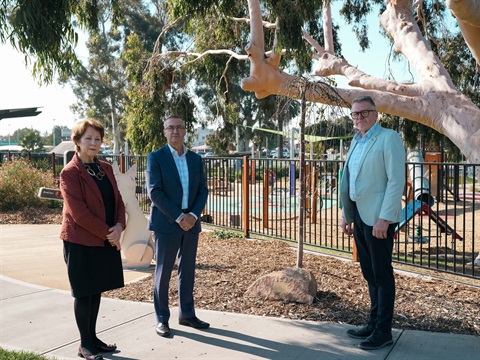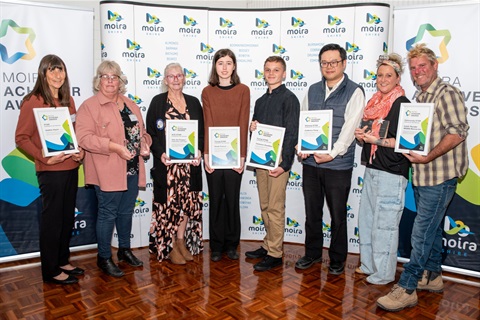16 November 2021 — Landcarers hoping to find evidence of the threatened long-nosed potoroo in the Sunshine Coast hinterland have secured $28,200 in critical funding from the Landcare Led Bushfire Recovery Grants program.
Coolum and North Shore Coast Care (CaNSCC) are putting this funding towards a photographic study and community engagement to determine if the shy nocturnal marsupial is living in the Mt Ninderry area east of the Bruce Highway. They also want to see what other threatened animals might be present in the landscape.
There is speculation that the elusive animal still resides in forest pockets in Mt Ninderry Reserve and environs after many decades of land-clearing and habitat fragmentation.
“The best way to find out if there are long-nosed potoroos is by installing infra-red motion sensing wildlife cameras across a range of sites. Anecdotal sightings from reliable sources suggest that the long-nosed potoroo survives in this area. We know they survive in some isolated pockets of forest habitat around the Sunshine Coast,” said project coordinator Jasmine Connors.
“The goal of our study is to help map the distribution of remaining populations of vulnerable fauna in bushfire-prone areas. We know these fires are inevitable and a better understanding of these fire-sensitive species will help improve their management,” added Leigh Warneminde, CaNSCC president.
CaNSCC undertakes practical projects including bush regeneration, citizen science, community education and advocacy. In this case, the aim is to gather evidence of the existence of potoroos and other fauna in the Mt Ninderry area to best to manage their habitat into the future.
The landcarers set up 12 infra-red motion-detecting cameras in the Mt Ninderry Reserve and eight on residential properties nearby. They are using truffle oil to lure out any long-nosed potoroos as truffles are their favourite food.
The long-nosed potoroo is listed as vulnerable in Australia and endangered in some states. It is one of the smallest macropod (kangaroo family) marsupials and subsists on a diet of fungi (truffles and mushrooms), and plant material. A shy animal, it uses areas of dense understorey for shelter and to hide from predators.
Motion-sensor cameras are considered a low-impact way of assessing any animal populations that might be present. The landcarers have since collected eight cameras and are now combing through thousands of photographs. They will collect the rest of the cameras at the end of November and run a workshop with other volunteers to go through more photos, hoping to find evidence of the long-nosed potoroo.
If we get pictures of the long-nosed potoroo, we will be looking for ways to improve conservation outcomes. Habitat connectivity (wildlife corridors) is lacking in Sunshine Coast landscapes, as is public awareness. The latter could be easily improved with signage to encourage people to be mindful of the threatened species while walking with their dogs or driving in the Mt Ninderry area.” said Jasmine Connors.
She said there was little research available about long-nosed potoroos in Queensland and she was further researching them.
“They are considered critical to forest biodiversity because they spread the spores of native truffles throughout the landscape, helping to maintain plant health and acting as ecosystem engineers.
The animal lives along the east coast of Australia, but its numbers and distribution have declined significantly. They continue to face habitat loss from land clearing, habitat fragmentation and other threats, including unplanned fire and predators such as foxes, dogs and cats,” she said.
This is one of three projects CaNSCC is undertaking. They received $49,000 in total from the Landcare Led Bushfire Recovery Grants program. In addition to the long-nosed potoroo photographic project, they are also using some of their grant total to provide replacement nest boxes for hollow dwelling fauna between Maroochy River and Stumers Creek. They will also undertake a project to detect and identify local endangered freshwater crayfish in the coming months.
The project outcomes will help land managers to deliver high quality ecological services to protect locally vulnerable and endangered species.
Anyone who spies a long-nosed potoroo on their property in the Mt Ninderry area is encouraged to






